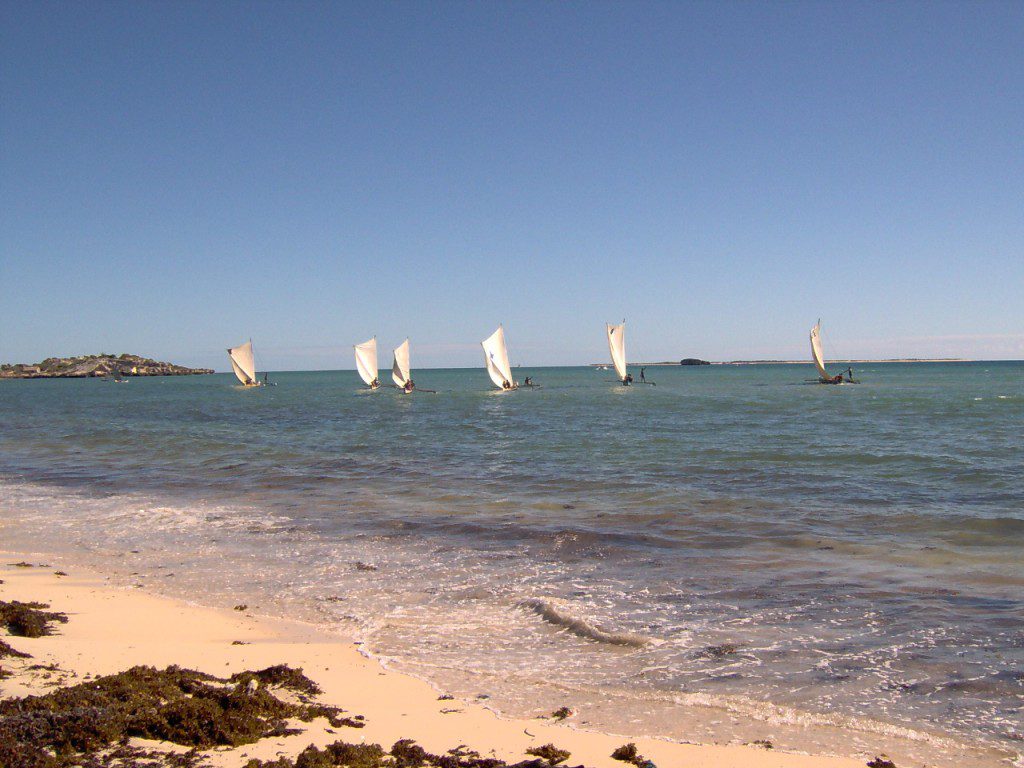By Karen Tocque, Blue Ventures volunteer, Madagascar
It was blowing hard from the south – about 35 knots and lifting the sand up into your face on the way down to dinner. We weren’t diving for a couple of days so we commandeered some pirogues with their Vezo crews and headed down to the mangroves for a camping expedition.
Our mission for the expedition was to find the nest of the Madagascar fish eagle sighted previously way outside of its documented territory and identify what other bird species might be present in the mangroves. Our findings will potentially contribute to the REDD+ scheme, providing market and financial incentives for countries to reduce their greenhouse emissions from deforestation. The scheme will hopefully pay the locals to retain the mangroves rather than cut them down for fire wood. Not only are the mangroves a vital habitat for the birds which inhabit them, but are an essential breeding ground for many reef species.
Camping in Madagascar is completely different to camping at home. First we had to stop in the nearby village to ask the president for permission to enter the mangroves and then requested a goat to purchase which would serve as our dinner. Whilst in the village, we picked up our staples of rice and beans and loaded up the pirogues, along with our goat, which had tried to escape a few times (who could really blame her!) and sent the Malagasy men sprinting after her.
Pirogues are particularly wide craft, as we discovered half way up one of the smaller tributaries, as we performed balancing routines on the outrigger to move mangrove branches out the way. We gave up and backed up all five of the pirogues to find a larger tributary. We headed up the large tributary, mostly paddling against the outgoing tide and the wind, looking for the elusive fish eagle. We saw Whimbrel, Numenius phaeopus, and Humblot’s Heron, Ardea humbloti. Unfortunately, we had travelled up the wrong main tributary and couldn’t find a suitable place to camp, so we turned around, hoisted the sails and headed back to the village, just in time as the tide was going out and we were scraping the bottom of the boats.
We camped on the beach, laid the pirogue sails on the sand, rolled out our sleeping bags and blankets, sprayed ourselves liberally in mosquito repellent and watched as Walker, one of our volunteers was taught how to kill a goat. Once killed, the goat was hung up in the tree, skinned and butchered. Thankfully I had not become attached to the goat as it had lain at my feet in the pirogue all afternoon. We feasted on goat, rice and curried beans that night under a very bright waxing moon before falling asleep under the stars. If you woke up in the wee hours of the morning when the moon had faded from vision, the stars were brilliant and you could clearly see the Milky Way.
We woke at 5.30am to explore the mangroves once again and look for our nesting fish eagle, however the tide was against us and we turned our heads for Andavadoaka and a quick sail home. We will return to the mangroves during this expedition to continue the search.



